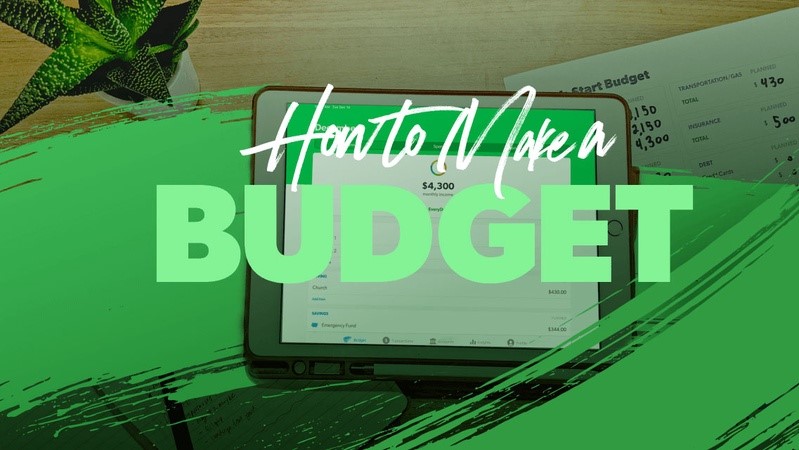Introduction
Budgeting is one of the most effective ways to take control of your finances. Yet, many people struggle to create a budget that actually works for them. They either find it too restrictive, fail to track their expenses, or give up after a few months. The key to a successful budget is making it realistic, flexible, and easy to follow.
A good budget helps you manage your income, reduce unnecessary spending, and save for future goals. Whether you want to pay off debt, build an emergency fund, or simply spend smarter, this guide will show you how to create a budget that works for your lifestyle.
What is a Budget and Why is it Important?

A budget is a financial plan that tracks your income and expenses to ensure you are spending money wisely. It helps you:
- Avoid overspending and unnecessary debt
- Set aside money for savings and investments
- Plan for emergencies and unexpected expenses
- Achieve long-term financial goals
Many people associate budgeting with sacrifice and restrictions, but in reality, a good budget gives you financial freedom and peace of mind.
Step-by-Step Guide to Creating a Budget That Works

1. Calculate Your Total Income
The first step is to determine how much money you make each month. Include:
- Salary or wages (after taxes)
- Side income (freelancing, gig work, or passive income)
- Any government benefits or other sources of income
Understanding your total income helps you plan your expenses based on what you can afford.
2. Track Your Expenses
Before setting a budget, you need to know where your money is going. List all your fixed and variable expenses:
Fixed Expenses (Do not change every month)
- Rent or mortgage
- Utility bills
- Loan payments
- Insurance
Variable Expenses (Change based on spending habits)
- Groceries
- Dining out
- Entertainment
- Shopping
Tracking expenses for at least one month helps you identify where you can cut costs and make smarter spending decisions.
3. Categorize Your Expenses
After tracking expenses, divide them into needs, wants, and savings:
- Needs: Essential expenses like rent, food, and transportation.
- Wants: Non-essential spending like eating out and entertainment.
- Savings & Investments: Emergency fund, retirement, and debt payments.
A simple rule is the 50/30/20 budget method:
- 50% for needs
- 30% for wants
- 20% for savings and debt repayment
This method ensures you cover all essential expenses while saving for the future.
4. Set Financial Goals
A budget without goals lacks motivation. Set short-term and long-term financial goals to stay focused:
- Short-term: Save $500 for emergencies, pay off a credit card.
- Long-term: Buy a house, build a retirement fund.
When your budget is linked to real goals, it becomes easier to follow.
5. Create a Realistic Spending Plan
Now that you know your income, expenses, and goals, create a spending plan that fits your lifestyle.
- Adjust expenses to align with your income
- Reduce unnecessary spending
- Prioritize savings and debt payments
A budget should be flexible. If your income changes or unexpected expenses arise, adjust your budget accordingly.
6. Use Budgeting Tools or Apps
Technology makes budgeting easier and more efficient. Some of the best budgeting tools include:
| Budgeting Tool | Features | Best For |
|---|---|---|
| Mint | Tracks expenses, categorizes spending | Beginners |
| YNAB (You Need a Budget) | Zero-based budgeting, goal setting | Advanced users |
| PocketGuard | Prevents overspending | Budget-conscious people |
| Excel Spreadsheets | Customizable budgeting | People who prefer manual tracking |
Choose a tool that suits your needs and financial habits.
How to Stick to Your Budget

1. Review Your Budget Regularly
Check your budget weekly or monthly to see if you are sticking to it. Adjust it if needed.
2. Cut Unnecessary Expenses
Identify areas where you overspend and find alternatives. Example: Instead of eating out four times a week, cook at home and save money.
3. Build an Emergency Fund
Unexpected expenses happen. Aim to save at least three to six months’ worth of expenses to handle emergencies without debt.
4. Use the Envelope System for Cash Spending
Allocate cash for different categories like groceries and entertainment. Once an envelope is empty, you can’t spend more.
5. Automate Savings and Bill Payments
Set up automatic transfers for savings and bill payments to ensure you never miss a due date.
Common Budgeting Mistakes to Avoid

1. Setting an Unrealistic Budget
If your budget is too strict, you may feel frustrated and give up. Be realistic and flexible.
2. Forgetting to Track Small Expenses
Small purchases like coffee or impulse buys add up quickly. Keep track of every expense.
3. Not Adjusting Your Budget When Needed
Your financial situation can change. Adjust your budget when your income increases or unexpected expenses arise.
4. Not Having an Emergency Fund
Without a financial safety net, unexpected costs can ruin your budget. Start small and build your savings over time.
5. Ignoring Debt Payments
If you have debt, include payments in your budget to avoid high interest and late fees.
Staying Motivated with Your Budget

Staying motivated is key to sticking with your budget. Celebrate your successes, no matter how small. If you reach a savings goal or cut back on spending, reward yourself in a way that doesn’t hurt your budget. Share your goals with friends or family to keep yourself accountable. Having support can help you stay focused on your financial goals.
Challenges of Budgeting
Despite its benefits, budgeting can be challenging. Many people find it hard to stick to a budget, especially when unexpected expenses arise. It can also be difficult to accurately track all spending, and some may feel restricted by their budget. Overcoming these challenges requires commitment and regular review of your budget.
The Future of Budgeting

The future of budgeting looks promising. As technology advances, more people will likely use budgeting apps and tools to help manage their finances. These tools can provide real-time tracking and personalized advice. With growing awareness of financial literacy, budgeting will continue to be an essential part of achieving financial success for many individuals and families.
Comparative Table: Budgeting Methods
| Budgeting Method | Description | Pros | Cons |
|---|---|---|---|
| 50/30/20 Rule | Split income into needs, wants, and savings. | Simple and easy to understand | Might not fit everyone’s situation |
| Zero-Based Budgeting | Every dollar is assigned to a category. | Encourages careful spending | Takes time to set up |
| Envelope System | Use cash in envelopes for different categories. | Helps control spending | Less convenient in a cashless world |
| Spreadsheet Budgeting | Use a spreadsheet to track income and expenses. | Flexible and customizable | Requires manual tracking |
| Budgeting Apps | Use apps to track spending automatically. | Convenient and time-saving | Can be less flexible than manual methods |
Analysis Table: Example Budget Plan
| Category | Suggested Percentage | Example Amount (for $3,000 income) |
|---|---|---|
| Rent/Mortgage | 30% | $900 |
| Utilities | 10% | $300 |
| Groceries | 15% | $450 |
| Transportation | 10% | $300 |
| Entertainment | 10% | $300 |
| Savings | 15% | $450 |
| Debt Repayment | 10% | $300 |
Adjust your budget percentages based on your income and lifestyle.
Conclusion
Creating a budget that actually works is about balancing your income, expenses, and financial goals. A budget should fit your lifestyle, be flexible, and help you spend wisely. By using easy budgeting strategies, setting clear financial goals, and tracking your expenses, you can manage your money better and build a secure future. Remember, budgeting is not a one-time task; it’s something you need to keep doing regularly.
Key Takeaways
- Track your income and expenses to understand your financial situation.
- Use a realistic spending plan to avoid overspending.
- Set financial goals to stay motivated.
- Use budgeting tools and apps to simplify the process.
- Review and adjust your budget as needed.




